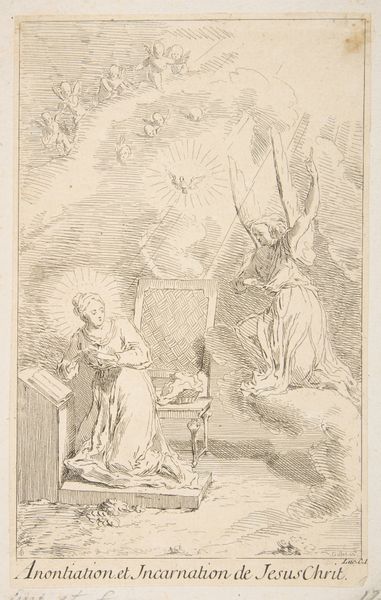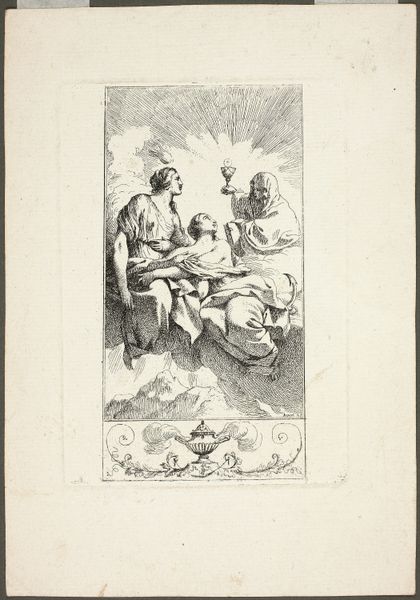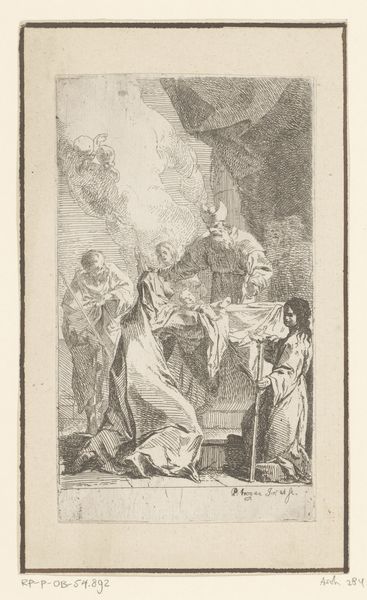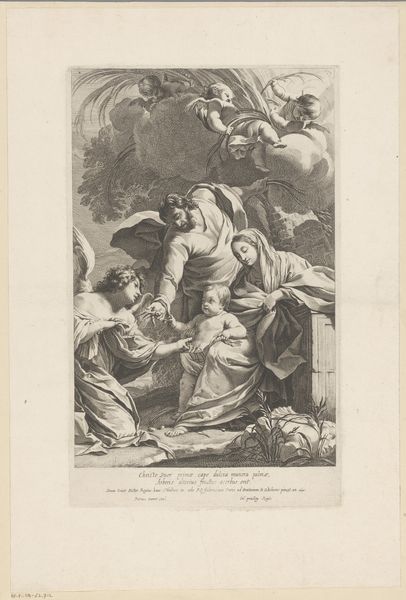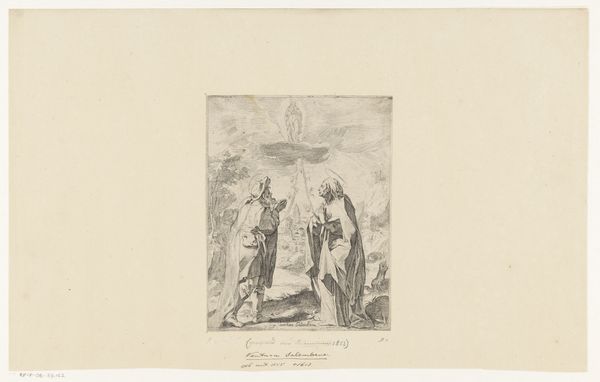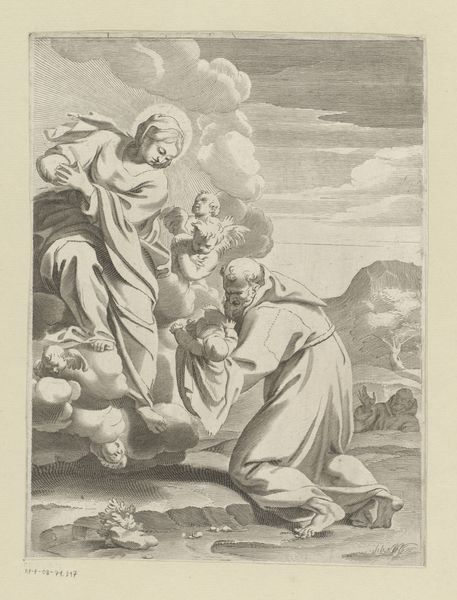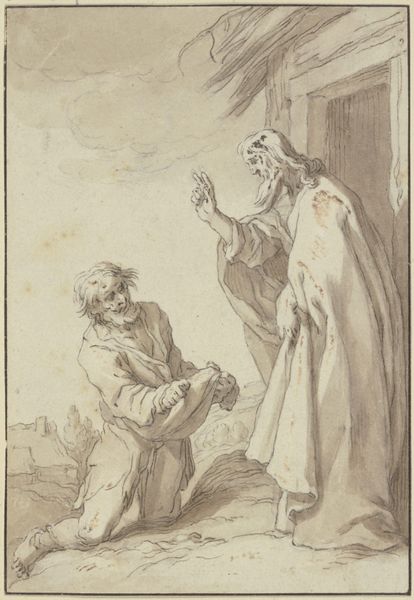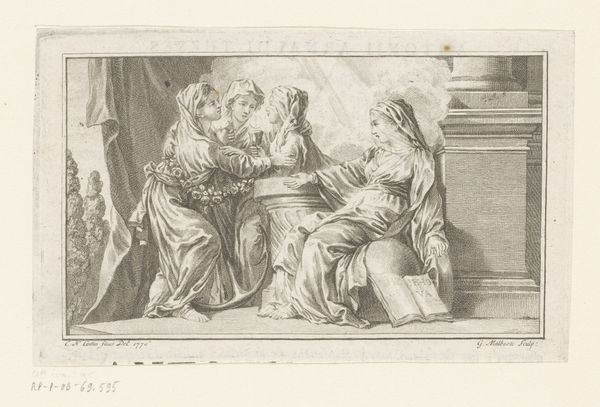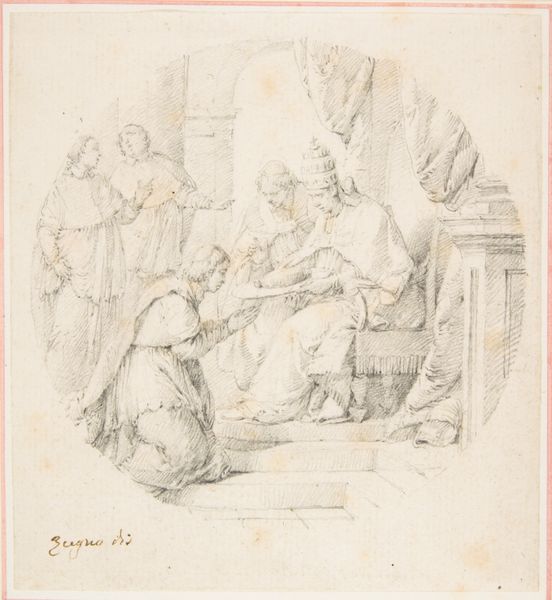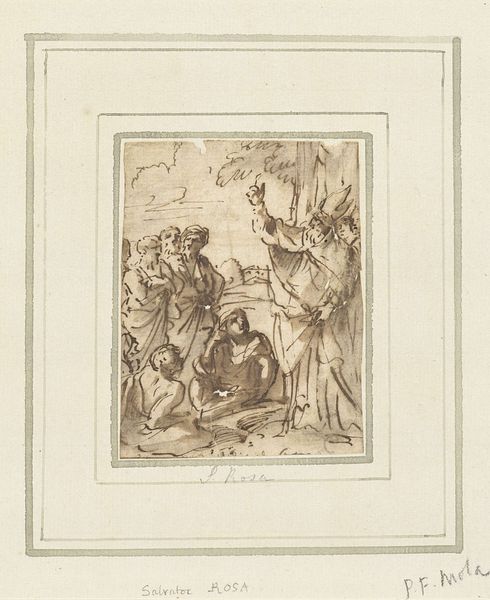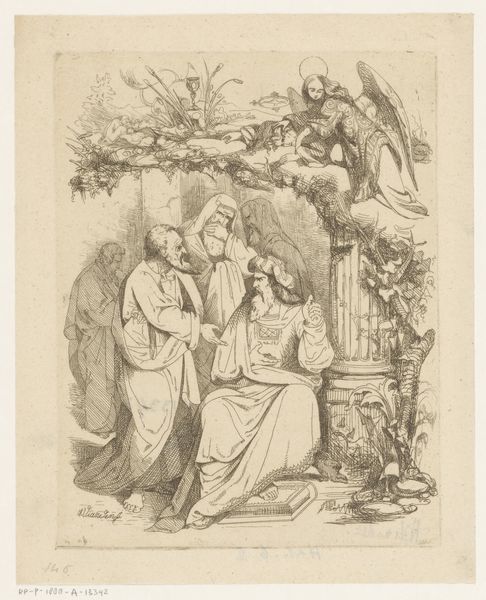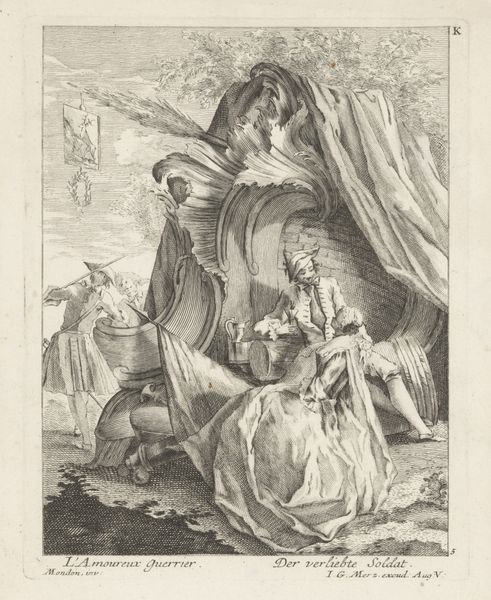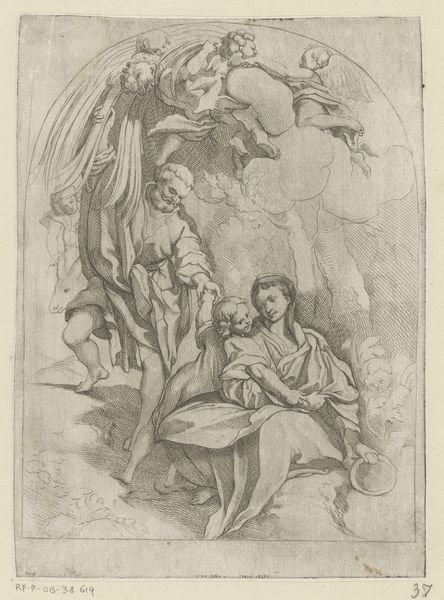
print, etching
#
narrative-art
#
baroque
# print
#
etching
#
figuration
#
history-painting
Dimensions: height 120 mm, width 95 mm
Copyright: Rijks Museum: Open Domain
Curator: This etching, attributed to Bernard Picart and dating from 1710 to 1733, depicts "The Three Marys at the Tomb." It's a classic subject, rendered here with an intriguing, almost hurried energy. Editor: The immediate impression is one of quiet grief, a subdued sorrow. The figures are huddled together, the lines of the etching emphasizing a collective weight. There is movement despite their somber mood. Curator: It’s a masterful depiction of a pivotal moment in Christian narrative. The three Marys, having come to anoint Christ’s body, discover the empty tomb. The artist is using very precise iconography. The oil vase to anoint Jesus’ body sits abandoned at the feet of one of the women. The landscape too is of importance. The scene is situated inside of a craggy, barren site. Editor: It's interesting to consider how this scene has been re-imagined throughout history. Picart, working within the Baroque idiom, definitely conveys a more emotionally fraught encounter than earlier Renaissance interpretations. This feels much more intimate and immediate, as if we’re intruding on a profoundly private moment of revelation. It certainly breaks from typical Renaissance precision, a perfect departure given its subject of miraculous departure. Curator: The medium itself—etching—lends a certain urgency to the image. The density of lines around the figures creates a sense of emotional intensity. Light and shadow enhance the emotional impact of the narrative; note how the use of light suggests something beyond comprehension has occurred. The figures emerge from what seems to be chaotic nothingness, but we can intuit that light exists inside the tomb itself. Editor: How fascinating to think about how faith traditions are often represented with visual symbols. In this print, what visual conventions, whether intentional or inherited, speak to larger anxieties or hopes of that period? How might people react to this, depending on how religion affected the state of society? Curator: These are precisely the kinds of questions the artwork provokes. Thinking through the history and impact, it is remarkable to consider the various interpretive lenses applied over centuries to enduring stories of belief. Editor: Absolutely, seeing the layered ways religious encounters and art intertwine really showcases the enduring power of visual storytelling.
Comments
No comments
Be the first to comment and join the conversation on the ultimate creative platform.
